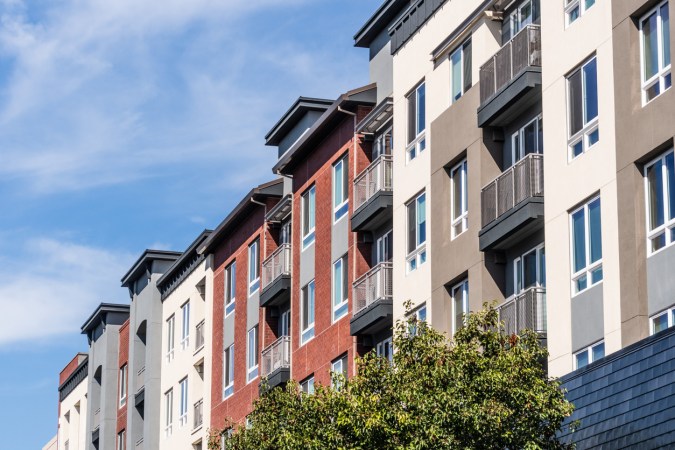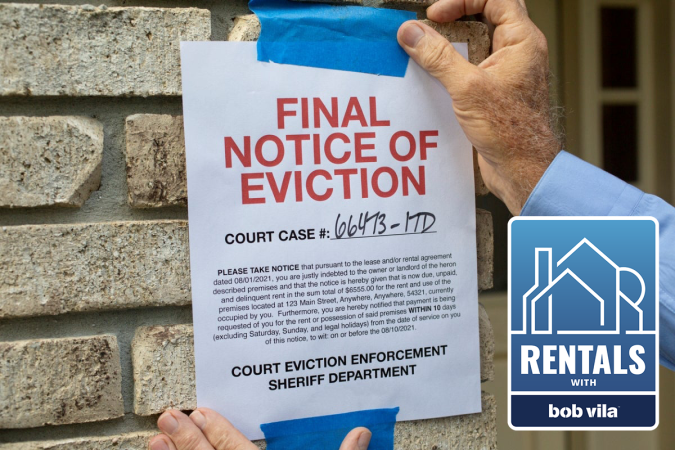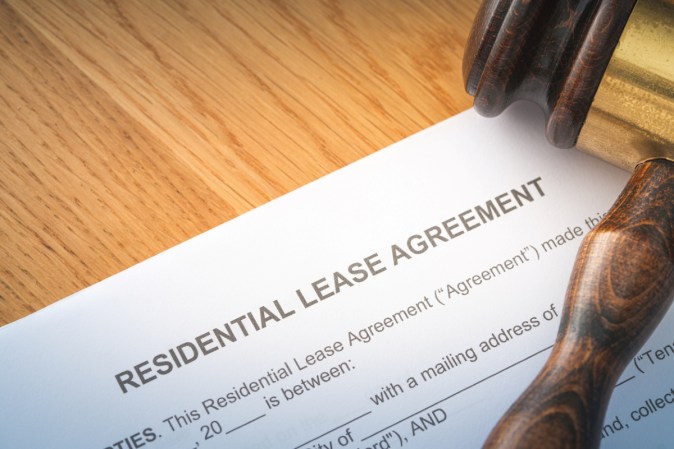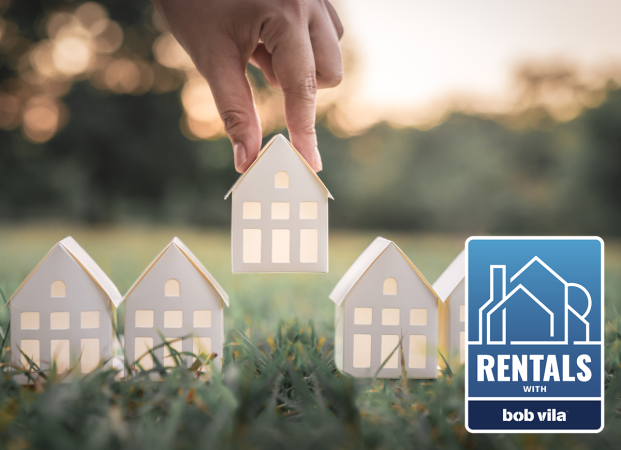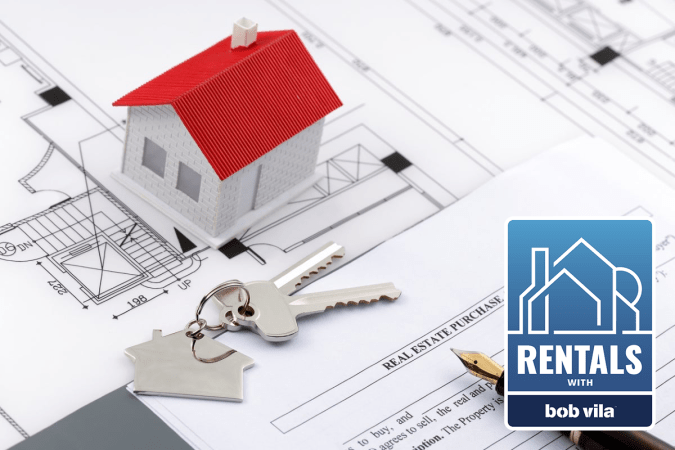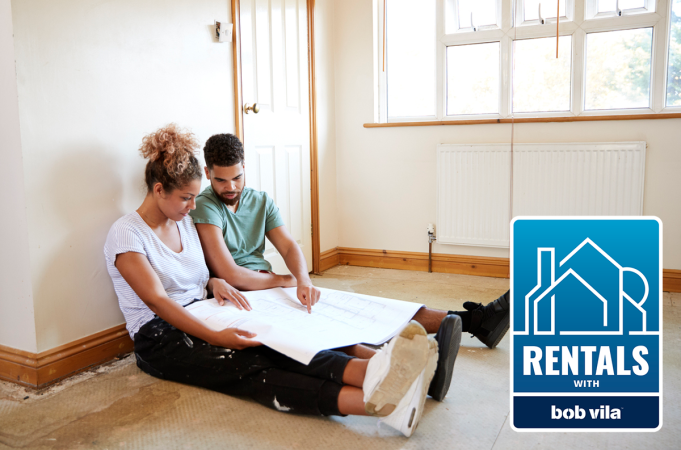We may earn revenue from the products available on this page and participate in affiliate programs. Learn More ›
It’s no secret that owning real estate and renting property to tenants can be a great way to earn passive income and build wealth. But getting started as a landlord often isn’t as simple as buying property and putting it on the rental market. One of the best ways for property owners to avoid common landlord pitfalls and hit the ground running is to understand each step in the process. By reviewing what it takes to secure an investment property, decide on property management, and officially become a landlord leasing to tenants, property owners can put themselves in a better position to succeed. Property owners—and those thinking about investing in rental property—can use this guide to learn how to become a landlord and get started earning rental income.
Before You Begin…
Before choosing a rental property, it’s often worth taking the time to better understand the realistic concerns and responsibilities of landlords. For those who are interested in becoming a landlord but do not yet own a rental property, one of the biggest hurdles they may face will be affording the initial cost of investment. Even with financing to help pay for investment property, buyers will likely need to put some of their own money forward as a down payment—and that amount could be substantial.
Additionally, some investment properties may require extensive cleaning and renovations before they are ready to be rented out to tenants. Although property owners may be eligible for loans to help cover the cost of renovations, it’s likely they will need to pay these expenses out of pocket before they receive their first rent check.
Landlords may also want to double-check their legal responsibilities and the ongoing maintenance needs of their property. Understanding current tenant and landlord rights in their particular city or state gives landlords the knowledge they need to successfully navigate the landlord-tenant relationship. Addressing these cost, legal, and maintenance concerns before putting their property on the rental market may help landlords reduce costly mistakes and better protect themselves and their tenants. Prospective property owners may even decide that becoming a landlord isn’t right for them.

STEP 1: Figure out how much you can afford to spend on a rental property.
Similar to buying a primary residence, prospective landlords will want to figure out how much money they can afford to spend on a rental property—that includes both up-front and ongoing costs. When purchasing investment property, having a maximum price in mind can make it easier for buyers to zero in on rental properties in their budget. Landlords may also want to consider any additional costs that may be necessary to get the property ready for tenants, including repairs or renovations. There may be unexpected costs at some point down the road that landlords need to plan for as well, such as maintenance and repairs that are not covered by their property insurance.
When determining if it’s the right time to buy rental property, prospective landlords may find that they need to get their finances in order first. Organizing their finances may include paying off high-interest debt such as credit cards or saving up more money for a down payment. Doing so can free up more capital to pay the mortgage on a rental property while bolstering a borrower’s lending qualifications.
STEP 2: Decide how you want to manage the rental property.
One of the first big decisions for a landlord to make is deciding whether they want to manage the property on their own or hire a property management company. Private landlords who manage their properties on their own may have more landlord responsibilities than those who outsource their property management—-particularly when it comes to maintenance and repairs. For example, if a pipe breaks in the middle of the night, a private landlord would be responsible for finding a plumber and fixing the issue as soon as possible. This could mean fielding calls from upset tenants at any time and doing the legwork to find a qualified professional. On the other hand, working with a property management company puts the day-to-day management of the property into the management company’s hands. The downside to a property management company, however, is the cost. Landlords who choose to outsource their property management have to factor this additional expense into their rent prices or accept a lower return on their investment.
Another decision landlords have to make when setting up their rental is the business structure of their property. Many landlords choose to formally structure their rental business to better protect their personal assets and separate their rental income from personal income. For example, some landlords set up a limited liability company (LLC) for their business to limit their own personal liability.

STEP 3: Research the rental market and find a property with real potential.
Knowing the rental market in a particular area can help a landlord choose the right rental property for their financial goals. A landlord who purchases a property for a low price but in a less desirable area may not make the income they were hoping for from their property. They may even have a hard time consistently finding tenants interested in renting in their area. On the other hand, purchasing an expensive home in a highly desirable area could cost more for the landlord in terms of total purchase price, down payment, and property insurance. However, landlords who have properties in desirable locations may have an easier time finding tenants while being able to charge higher rent.
A landlord may want to connect with a local real estate agent to get a better idea of what areas and neighborhoods are currently preferable for renters. Real estate professionals should have a good grasp on the current state of renting for both landlords and tenants, and these experts can provide advice on how to find the right property to purchase. The landlord may also want to conduct their own market research for rent prices, which can better help them determine the financial potential of any properties they may be considering in that area.
STEP 4: Secure financing if necessary, and purchase your rental property.
Once a prospective landlord finds a property that is in their budget and is packed with potential, they can move forward with a purchase. In many cases, buyers will require financing from a lender to afford the cost of a rental property. That financing could include a conventional mortgage, a commercial investment property loan, or even a second mortgage on the buyer’s primary residence. However, mortgage companies may have more stringent requirements for loans on investment properties compared with those for primary residences, including higher down payment and credit score requirements. Mortgage interest rates on investment property loans may also be higher than those on primary residence mortgages, which can add to the total cost of owning a rental property. Working with the best investment property loan companies can help prospective landlords get the financing they need with favorable lending terms.

STEP 5: Buy landlord insurance for your rental property.
Purchasing landlord insurance can help the property owner cover the cost of physical damage to the property due to certain perils, protect the landlord against liability claims, and even reimburse them for lost revenue in the event the property cannot be rented out after a covered loss. For instance, if a tenant accidentally starts a kitchen fire that damages the floors and walls, landlord insurance will typically cover the cost of repairs (less the deductible).
While purchasing an insurance policy is another expense that needs to be budgeted for, the cost of landlord insurance is often worth it. Having landlord insurance from a reputable company (such as Steadily) is a smart way for property owners to protect their investment and their finances. They may even need to purchase landlord insurance to get approved for an investment property loan, as lenders will want to know that the building structure is insured in case of fire, storms, or other covered perils.
STEP 6: Brush up on landlord and tenant laws in your area—or consult a landlord attorney.
For someone hoping to become a landlord, tenant laws are often a major concern—would-be landlords understandably want to know what their legal responsibilities are when renting out property. Tenant laws, rights, and restrictions can vary greatly between states and even between cities. Knowing these laws inside and out can help a landlord reduce the risk of tenants filing claims or lawsuits against them. To that end, property owners may want to better understand tenant rights and what a landlord cannot do under law. Tenant laws and legal guidelines may dictate how evictions are handled, when the landlord can raise rent prices, and under what circumstances they can enter the premises of rented property.
Landlords may want to contact their local housing authority or work with a knowledgeable real estate attorney to better understand their local laws and their own legal responsibilities. Working with a professional could make it easier to get answers to questions regarding complicated legal scenarios so property owners can avoid complaints or even lawsuits from tenants. If a lawsuit does happen even after a landlord takes these precautionary steps, the best landlord insurance may help cover court costs and other legal fees.
STEP 7: Make any necessary renovations and prepare your property for renters.
With property financed and purchased, landlords can get to work preparing the rental for tenants. Depending on the condition of the property, the landlord may have renovations and repairs that need to be made before it’s ready to be rented out. On the other hand, a landlord may have found an investment property that is in good condition and only needs some cleaning and minor repairs before renters can move into the unit or house.
For properties that do not require major renovations or repairs, landlords will generally need to complete these tasks before renting them out to tenants:
- Cleaning floors, walls, counters, appliances, and cabinets to remove dirt, debris, and odors.
- Testing smoke detectors, locks, door latches, and other safety features.
- Hiring an electrician to test that the wiring and outlets are safe and in good working order.
- Making minor repairs around the property such as spackling drywall and hammering small dents out of appliances.
- Painting and refinishing as needed.
STEP 8: Look at local comps and set an appropriate rental price that will attract tenants.
Landlords can rent their property for whatever price they choose, but charging too much for rent could drive away potential tenants. On the other hand, setting rent that’s below market value may undercut the amount of income that the property can generate. The easiest way for landlords to price their rental units at an appropriate rate is to compare their property to other options in the area. Using online rental-finding tools, browsing local for-rent forums, and even checking the local newspaper can give a landlord a better idea of what rental properties are currently going for in the area. Landlords may want to find between three and six properties in the area that are similar to theirs to help them set their rental price. If they need professional assistance in this matter, they may want to contact a real estate agent to help determine what to charge for rent in a particular market.
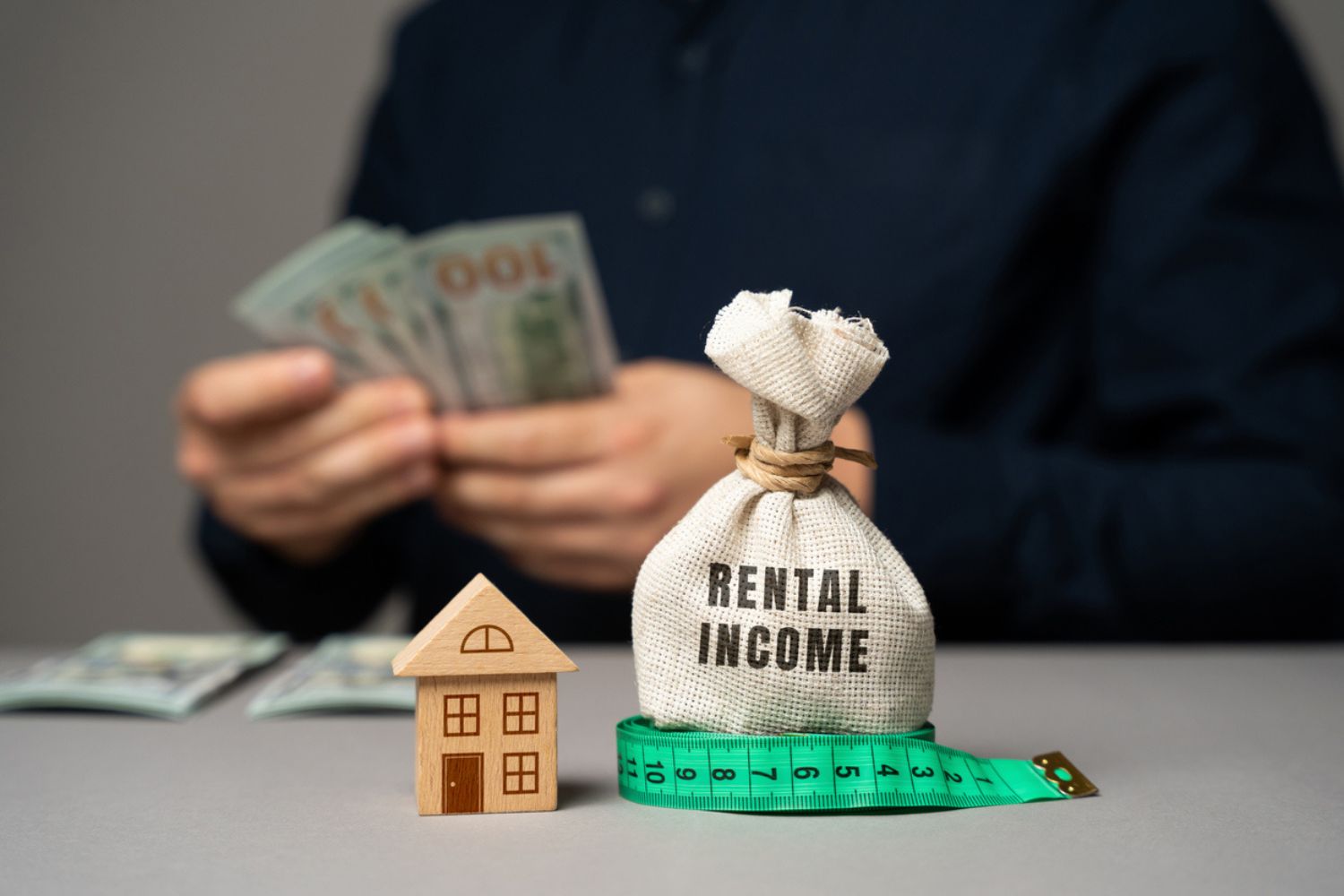
STEP 9: Create a listing, and show the property to potential renters.
With their property cleaned and ready to rent, a landlord can now start the process of finding tenants. Online real estate sites can make it easier to list properties for rent and field inquiries from potential tenants. When a landlord lists a property, it can be a good idea to include professional-quality photos of the space in addition to a comprehensive description that highlights the property’s most compelling features—a private balcony space, in-unit laundry, or high-end fixtures, for instance. Hiring a professional real estate photographer isn’t always necessary—modern smartphones can usually produce quality photos with their cameras—but doing so could potentially increase the number of applicants for a property if it’s in the landlord’s budget.
Landlords can also include their rental policies in the listing to help attract qualified tenants and avoid wasting time scheduling showings for renters who are not a good fit for the property. For example, if a landlord doesn’t allow pets, they could add that exclusion to the listing. When it comes time to actually show the property to prospective renters, landlords may want to be prepared to highlight some of the most noteworthy features of the property, such as its proximity to restaurants, grocery stores, parks, or public transportation.
STEP 10: Draft a lease agreement, screen applicants, and land your first tenant.
Lease agreements are legal documents that spell out the conditions of the lease between the tenant and the landlord. These agreements typically list out the length of the lease, the rental price, and any penalties the tenant may face if they don’t pay their rent on time or at all. State laws determine what’s absolutely necessary to include in a landlord lease agreement, but property owners can often customize their agreements further. It’s generally recommended that landlords have their lease agreement looked over by a trusted attorney to make sure they’re following all applicable state and local property leasing laws, as well as protecting their own financial interests.
Once a landlord has their lease agreement in place, they can begin screening applicants for their property. A rental application makes this process easier and often includes information about a prospective tenant’s income, employment status, and previous rental experiences. Landlords may also want to conduct background checks or credit checks on potential renters to better understand their financial situation and any legal issues that may affect their ability to meet the landlord’s requirements. To that end, landlords may want to consider one of the best tenant screening services available.
After finding the right tenant, the landlord can either send over the lease agreement for them to sign or sit down with them to go over the terms. Even with a signed lease and security deposit in hand, landlords may want to verbally reiterate the overall rules, policies, and procedures to prevent any confusion with their new tenant.
STEP 11: Manage your rental property, your tenants, and your finances.
Landlords who choose to manage their properties on their own usually need to perform regular maintenance of the property, just as with a primary residence. Many landlords build strong relationships with local handyman businesses or contractors so they have someone readily available to complete maintenance tasks. Having a network of local contractors often makes it easier for landlords to manage their rentals without needing to make repairs themselves or spending a lot of time finding a qualified contractor when home systems and appliances break down.
Even landlords who work with property management companies sometimes need to personally manage certain aspects of their rentals, and using the best property management software allows them to screen tenants, accept rent online, and receive tenant service requests. Additionally, landlords may have to deal with tenant complaints and issues from time to time, and having procedures in place to receive and fix tenant issues can streamline the process and give both the tenants and landlord a better rental experience.
Finally, as business owners, many landlords have to manage the administrative side of their rental property. Administrative tasks often include maintaining records of important documents such as lease applications and agreements, repair and utility receipts, and tenant payment receipts. Landlords may want to have a plan to store all communication with renters, the property management company, and maintenance workers in case they need to refer back to them at a later date.
Buying an investment property and becoming a landlord isn’t always an easy task. Most landlords put time, effort, and lots of money into their properties to make sure they’re ready for tenants. Even after the initial cost of buying a property and getting it move-in ready, landlords have to manage their tenants and various aspects of their rental business. For many, being a landlord can easily become a full-time job. A landlord association can help rental property owners connect with one another to share tips and offer support, which can make being a landlord easier for individuals. As they set out on the path to becoming a landlord, property owners may want to keep a rental property checklist handy so they can be sure that they are following all the necessary steps to start strong.


